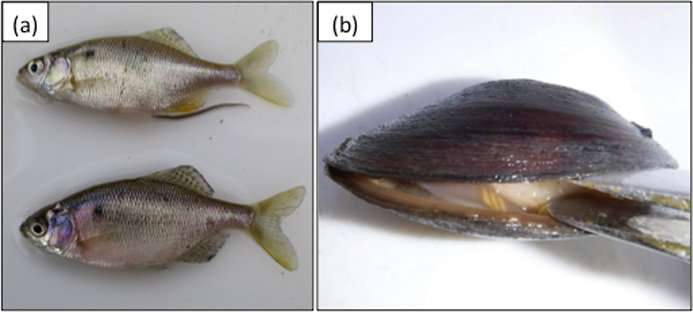Using eDNA to identify the breeding habitat of endangered species

Using wide-ranging eDNA analysis combined with traditional collection survey methods, Japanese researchers have identified the breeding site of critically endangered fish species Acheilognathus typus in the mainstream of Omono River in Akita Prefecture, Japan. The findings were published on November 14 in the online edition of The Science of Nature – Naturwissenschaften.
Surveying aquatic organisms is a lengthy and laborious process, and covering a wide area also comes with high costs. Environmental DNA (eDNA) analysis provides a solution to these issues. In underwater environments such as lakes, reservoirs and rivers, we can find fragments of DNA drifting in the water from feces, skin or any other source of water-dwelling organisms. Analysis of eDNA is particularly effective for rare species such as A. typus, which is difficult to find through traditional survey methods because of its low population densities. In this study, the research team carried out a wide-ranging eDNA survey followed by a traditional collection survey to find the new breeding habitat of A. typus in the Omono River, Akita prefecture, Japan.
For three days in August 2016 the team collected surface water samples from 99 locations, covering 112km of the Omono River, and extracted eDNA from the samples. They measured the DNA using a specific detection system for A. typus. After this, they placed fixed nets and bottle traps in places where the eDNA had been detected and confirmed the presence of adult fish. The team also used bivalves (where A. typus lay eggs) to confirm that they were breeding.
In the 99 locations of the Omono river surveyed, A. typus eDNA was found in 2 places, and in one of these locations the team captured one male and one female specimen. Eggs were found in the bivalve at the same place, so they were successfully able to identify it as the A. typus breeding site.
These findings demonstrate that in terms of cost and reliability, a combination of eDNA analysis and traditional collection methods is highly effective in identifying the habitats and breeding areas of rare species. The methods complement each other: the eDNA method is suited to surveying wide areas, while sample collection is very reliable for confirming species. This combination of methods could help to conserve this species by finding more breeding areas and establishing conservation areas. It could also be used for other rare and endangered species with a low population density spread across a wide area.
More information: Masayuki K. Sakata et al. Identifying a breeding habitat of a critically endangered fish, Acheilognathus typus, in a natural river in Japan, The Science of Nature (2017). DOI: 10.1007/s00114-017-1521-1
Journal information: Naturwissenschaften
Provided by Kobe University



















